
The house from the walled garden, Jun 2023.
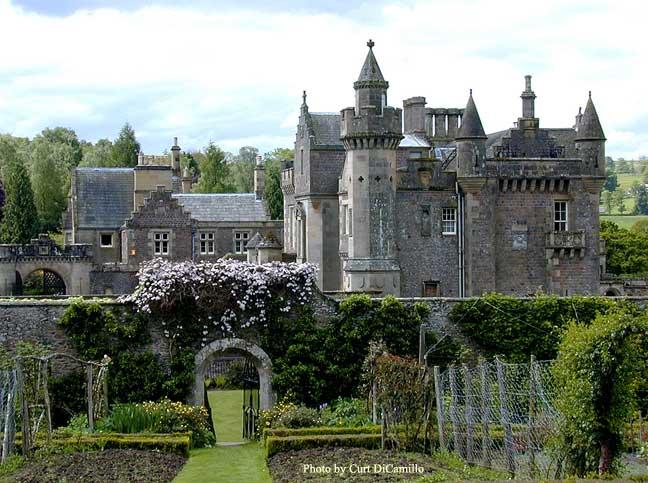
The house from the walled garden in 2002
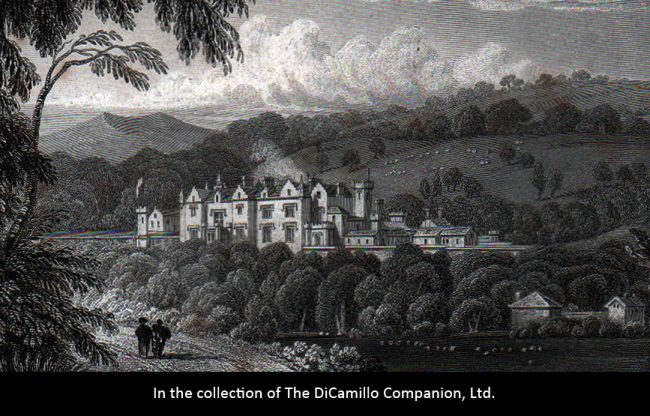
The house, from across the lake, from an 1829 engraving in "Neale's Views of Seats."
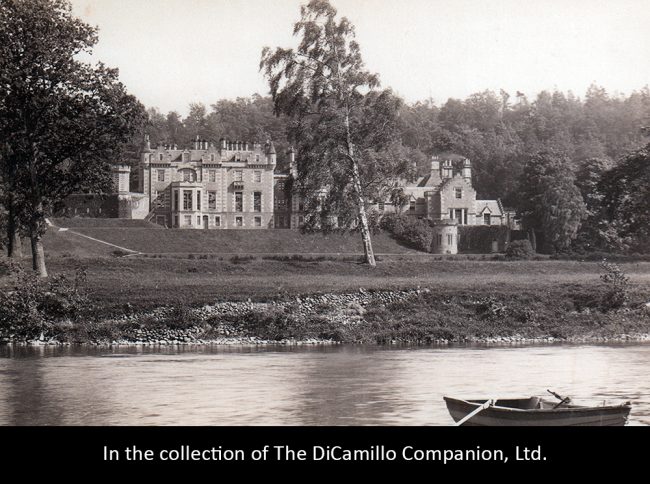
The house from across the lake from a 19th century postcard
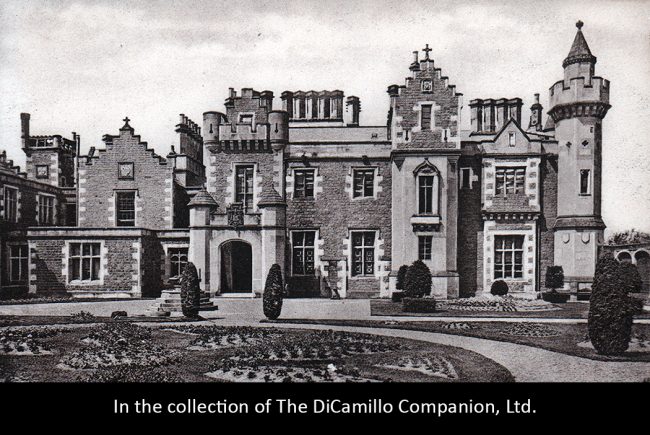
The entrance facade from a late 19th century postcard
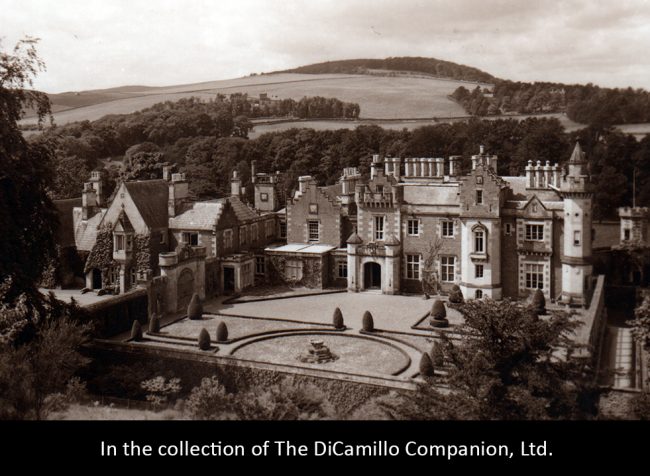
The entrance facade from an early 20th century postcard
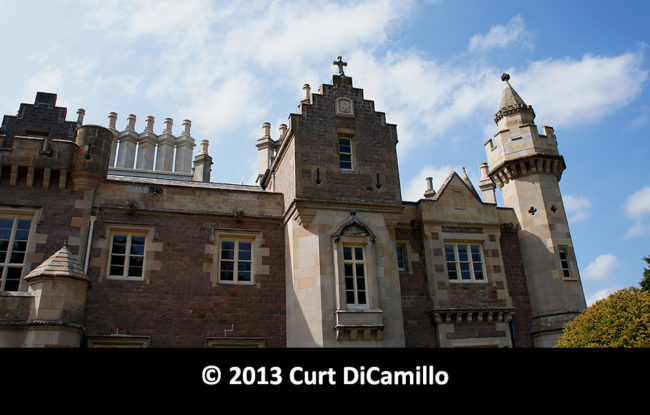
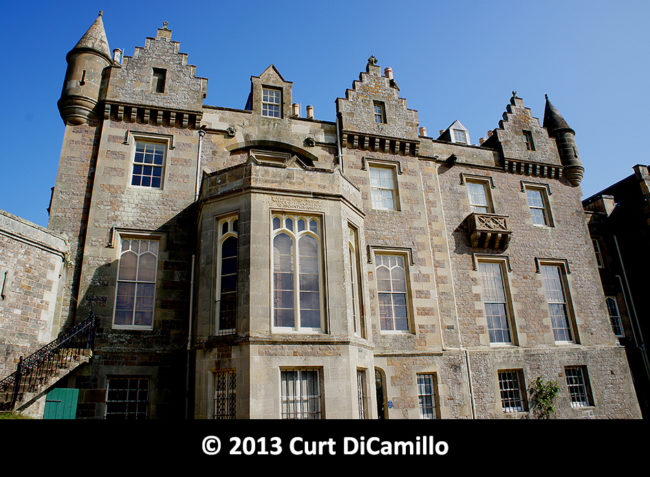
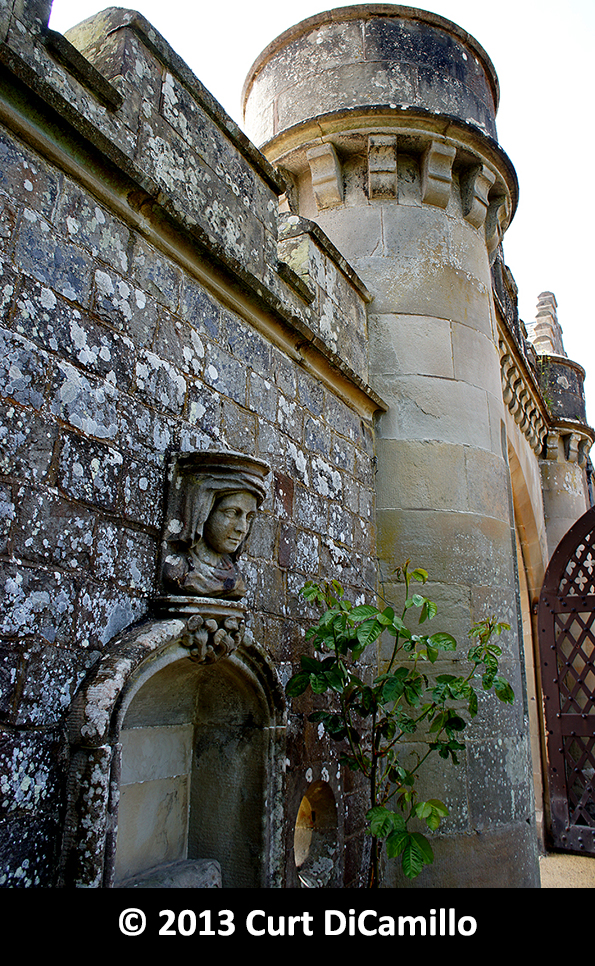
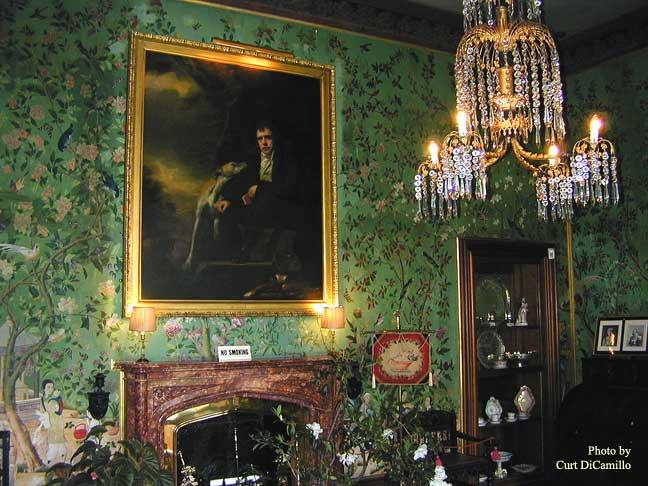
The drawing room
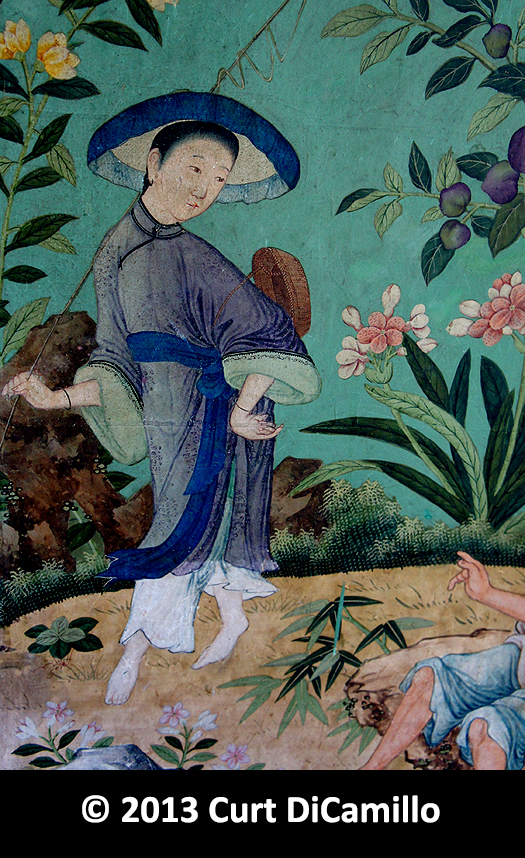
Detail of the hand-painted 19th century Chinese wallpaper in the drawing room
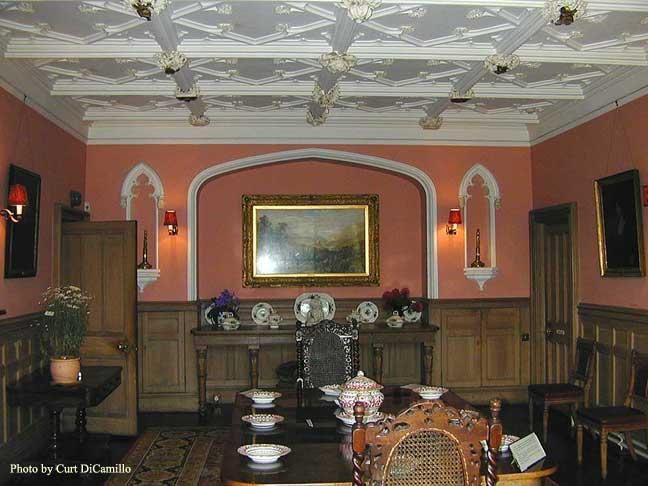
The dining room
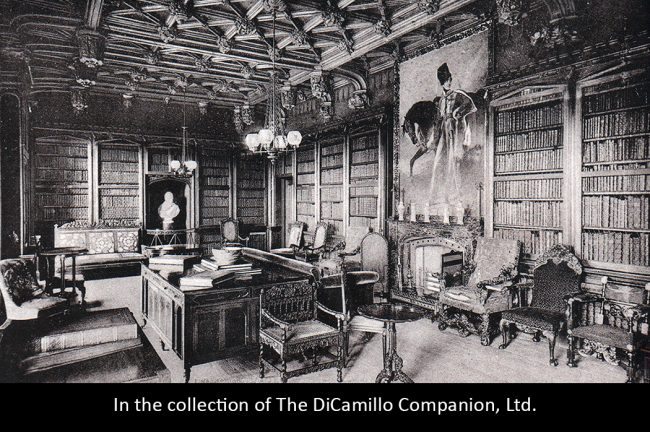
The library from a late 19th century postcard
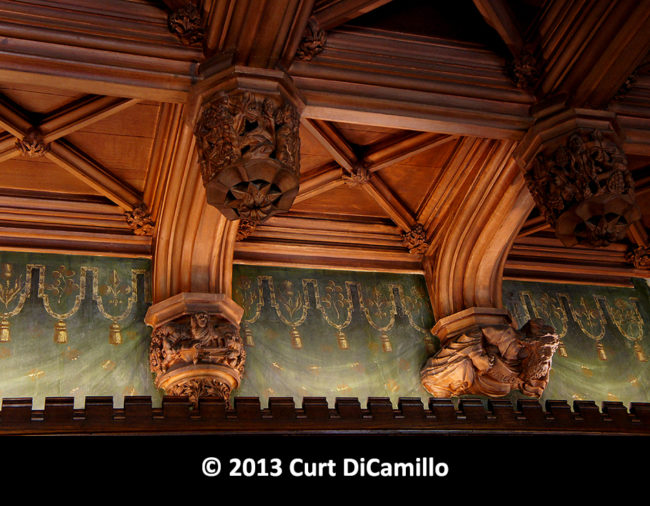
Library ceiling
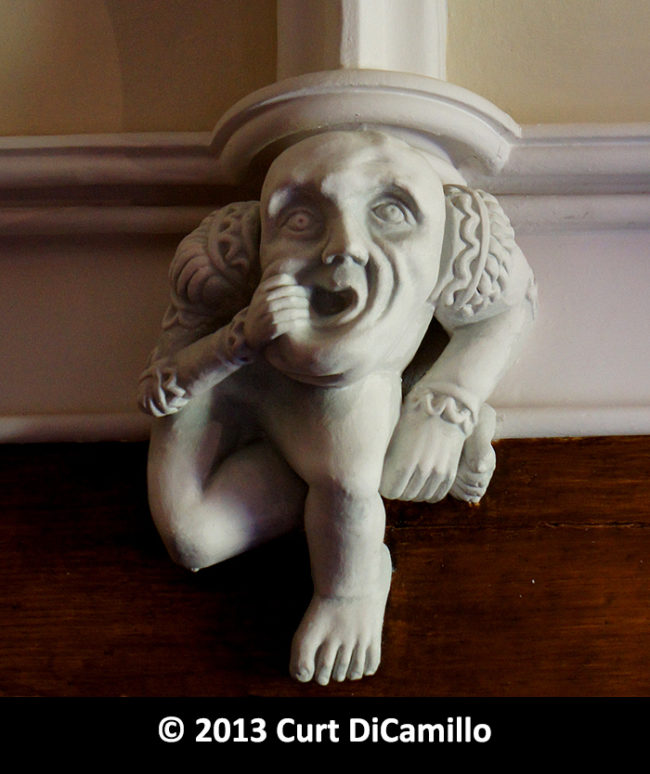
Plasterwork grotesque
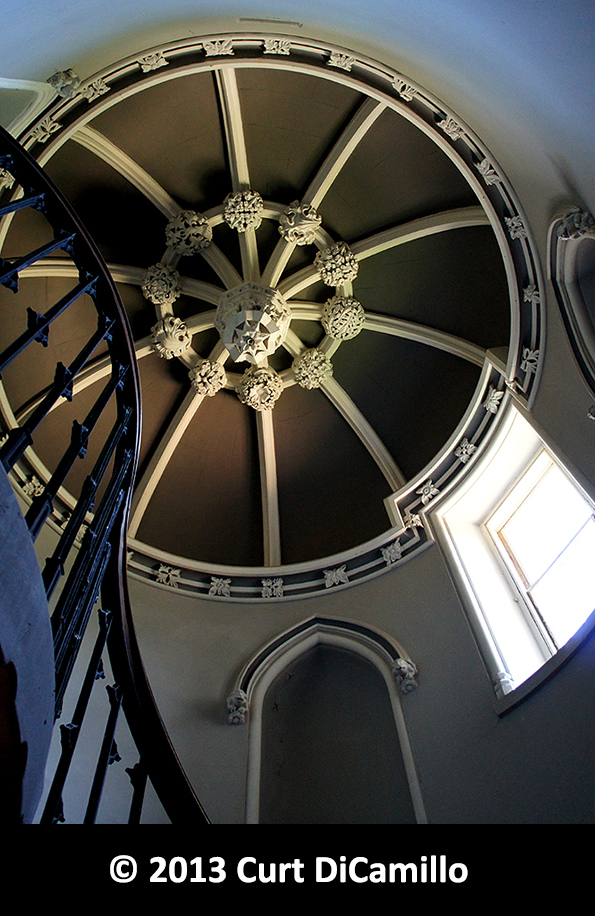
Spiral staircase
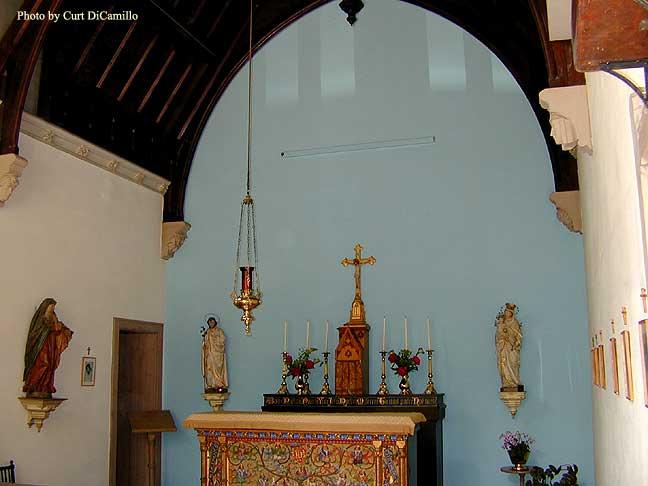
The chapel
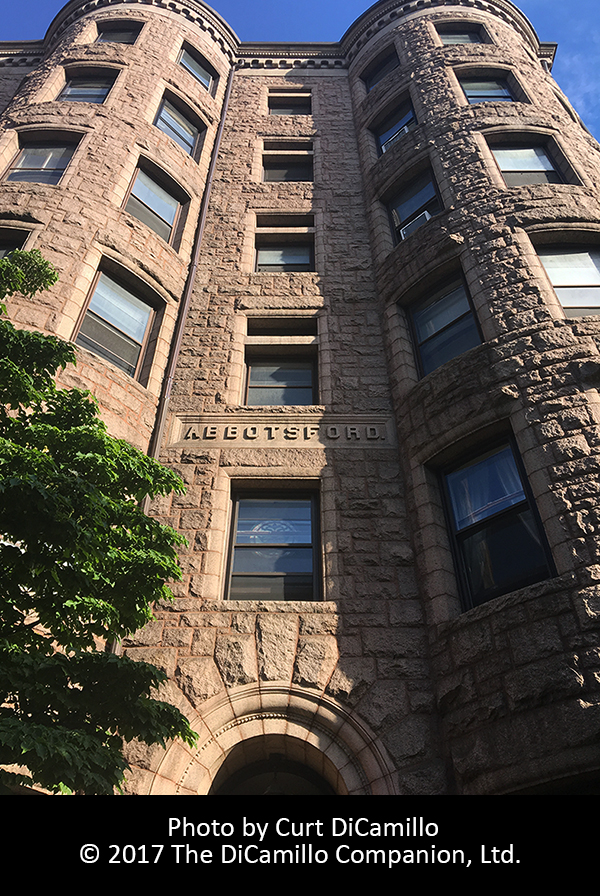
Abbotsford Apartments, Commonwealth Avenue, Boston.
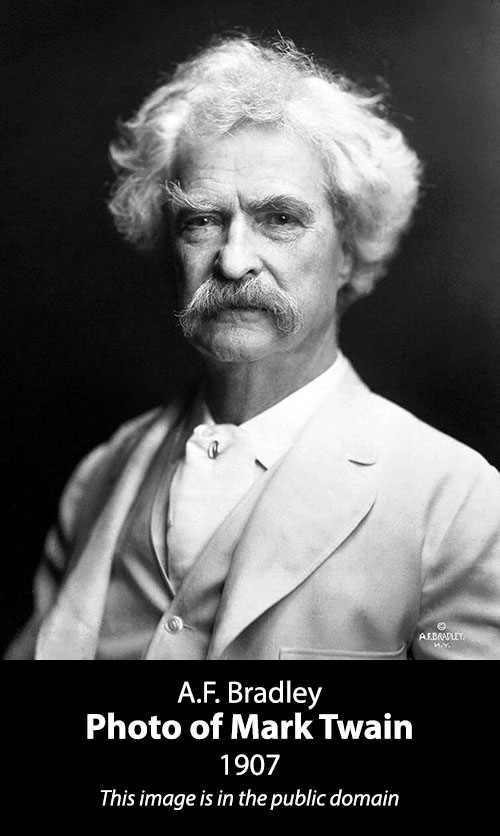
Twain believed that Sir Walter Scott was a primary cause of the American Civil War. See "House, Family & Collections History" section for more details.
Earlier Houses: An earlier farmhouse named Cartley Hall was demolished by Sir Walter Scott in 1822 and replaced by the current house.
Built / Designed For: Sir Walter Scott, 1st Bt.
House & Family History: In 1812, using income from his increasingly successful books, Walter Scott bought the Cartley Hall farmhouse along the Tweed. He demolished the old farmhouse in 1822 and replaced it with the current Scottish Baronial house (a style Scott helped to make enormously popular) that he renamed Abbotsford. The entrance hall is decorated with wood paneling from Dunfermline Abbey Church, while the drawing room boasts brilliant green hand-painted 19th century Chinese wallpaper (see "Images" section). Captain Hugh Scott presented the unusually vivid green wallpaper to his famous cousin as a gift for Abbotsford. Captain Scott, the second son of Walter Scott, Laird of Raeburn (Sir Walter Scott’s uncle), was in the naval service of the East India Company, which gave him access to exotic items like this wallpaper. The luxury wallpaper manufacturer De Gournay today makes a hand-painted wallpaper called "Abbotsford" that is directly insired by the 19th century wallpaper on the walls of Abbotsford's drawing room. In the 1850s a new wing was added by Scott's heirs to provide more private living accommodation away from the eyes of the increasingly large number of visitors that were coming to Abbotsford. Scott was created a baronet in 1820 by King George IV for his work in raising the profile of Scotland—including architecturally—and for his contributions to literature. The famous author died in the dining room at Abbotsford on September 21, 1832 and was buried at Dryburgh Abbey. Abbotsford, already a popular destination during Scott's lifetime, became a pilgrimage destination after his death, a tradition which continues today. Scott’s descendants continued to live in the house until 2004, when it was transferred to a charitable trust. Abbotsford only had electricity installed in 1962. Interestingly, one of America’s greatest authors, Mark Twain, pretty much laid the cause of the American Civil War on Sir Walter’s doorstep. In his 1883 memoir, "Life on the Mississippi," he had this to say on the subject: “Then comes Sir Walter Scott with his enchantments, and by his single might checks this wave of progress, and even turns it back; sets the world in love with dreams and phantoms; with decayed and swinish forms of religion; with decayed and degraded systems of government; with the sillinesses and emptinesses, sham grandeurs, sham gauds, and sham chivalries of a brainless and worthless long-vanished society. He did measureless harm; more real and lasting harm, perhaps, than any other individual that ever wrote. Most of the world has now outlived good part of these harms, though by no means all of them; but in our South they flourish pretty forcefully still. Not so forcefully as half a generation ago, perhaps, but still forcefully. There, the genuine and wholesome civilization of the nineteenth century is curiously confused and commingled with the Walter Scott Middle-Age sham civilization; and so you have practical, common-sense, progressive ideas, and progressive works; mixed up with the duel, the inflated speech, and the jejune romanticism of an absurd past that is dead, and out of charity ought to be buried. But for the Sir Walter disease, the character of the Southerner—or Southron, according to Sir Walter’s starchier way of phrasing it—would be wholly modern, in place of modern and medieval mixed, and the South would be fully a generation further advanced than it is. It was Sir Walter that made every gentleman in the South a Major or a Colonel, or a General or a Judge, before the war; and it was he, also, that made these gentlemen value these bogus decorations. For it was he that created rank and caste down there, and also reverence for rank and caste, and pride and pleasure in them. Enough is laid on slavery, without fathering upon it these creations and contributions of Sir Walter.”
Collections: The library contains 9,000 rare volumes; there is also an important collection of armor and a collection of curiosities, including Rob Roy souvenirs, a desk that belonged to King George IV, and a glass belonging to Robert Burns. On June 28, 2006 the firm of Lyon & Turnbull, Edinburgh, auctioned some contents of Abbotsford formerly belonging to the late Dame Jean Maxwell-Scott.
Garden & Outbuildings: In the early 19th century the old Scottish Parliament building in Edinburgh was demolished and some of the stonework found its way to the grounds of Abbotsford.
John Bernard (J.B.) Burke, published under the title of A Visitation of the Seats and Arms of the Noblemen and Gentlemen of Great Britain and Ireland, among other titles: 2.S. Vol. I, p. 244, 1854.
John Preston (J.P.) Neale, published under the title of Views of the Seats of Noblemen and Gentlemen in England, Wales, Scotland, and Ireland, among other titles: 2.S. Vol. V, 1829.
Country Life: CLXXII, 886 [Sir Walter Scott and his collection], 1982. C. Wainwright in Jun 9, 1989.
Title: Abbotsford Guidebook
Author: Maxwell-Scott, Walter
Year Published: NA
Publisher: Scotland: The Abbotsford Estate
ISBN: 0859332705
Book Type: Light Softback
Title: Biographical Dictionary of British Architects, 1600-1840, A - SOFTBACK
Author: Colvin, Howard
Year Published: 1995
Publisher: New Haven: Yale University Press
ISBN: 0300072074
Book Type: Softback
House Listed: Category A
Park Listed: Listed as a Garden & Designed Landscape
Past Seat / Home of: Sir Walter Scott, 1st Bt., 1812-32; Sir Walter Scott, 2nd Bt., 1832-47; Sir Walter Joseph Constable Maxwell-Scott, until 1954; Dame Jean Maxwell-Scott, until 2004.
Current Ownership Type: Charity / Nonprofit
Primary Current Ownership Use: Visitor Attraction
Ownership Details: Owned and operated by The Abbotsford Trust.
House Open to Public: Yes
Phone: 01896-752-043
Fax: 01896-752-916
Email: [email protected]
Website: https://www.scottsabbotsford.com/
Historic Houses Member: Yes